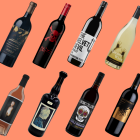Fine wine is produced the world over, from illustrious, globally-renowned chateaux in France to tiny artisan winemakers tucked away in the Spain’s Pyrenean foothills. Here, we explore the most important regions throughout Europe, with overviews on the grape varieties and wines produced in each region as well as the climate, landscape and proud history each has to offer.
BORDEAUX, FRANCE
Red varieties: Cabernet Sauvignon, Merlot, Cabernet Franc, Malbec
White varieties: Sauvignon Blanc, Semillon
Climate: Moderate, maritime
Landscape: Coastal, riverbank
Soil: Limestone, sand, clay, gravel
Need to know: Bordeaux is the powerhouse of French wine – if not fine wine in general. The region is home to more than 13,000 producers, largely split by the River Gironde into Left Bank and Right Bank properties. Some 90% of Bordeaux wines are reds made with Merlot and Cabernet Sauvignon, with the remaining 10% primarily Sauvignon Blanc and Semillon. The region also produces small quantities of sweet wine and sparkling, primarily Sauternes and Cremant.
CHAMPAGNE, FRANCE
Red varieties: Pinot Noir, Pinot Meunier
White varieties: Chardonnay
Climate: Cool
Landscape: Hilly
Soil: Limestone, chalk
Need to know: The name ‘Champagne’ speaks for itself! This was the very first region to produce sparkling wine, and is undoubtedly the best-known. There are more than 15,000 grape growers in Champagne today managing roughly 30,000 hectares, which is quite a small amount of land to share. Classic Champagne blends with Chardonnay, Pinot Noir and Pinot Meunier make up the vast majority of vineyards.
TUSCANY, ITALY
Red varieties: Sangiovese, Merlot, Cabernet Sauvignon
White varieties: Trebbiano, Vermentino, Malvasia
Climate: Moderate
Landscape: Hilly
Soil: Sand, marl, clay
Need to know: Known locally as Toscana, Tuscany is arguably Italy’s most important wine region, and is home to two particularly popular wines, Chianti and Brunello De Montalcino, which are synonymous with the classic Italian style. You’ll also find the highly-regarded ‘Super Tuscans’ here – wines produced by winemakers that have chosen to break free of the region’s restrictive laws.
LA RIOJA, SPAIN
Red varieties: Tempranillo, Grenache, Graciano, Carignan
White varieties: Garnacha Blanco, Macabeo, Malvasia
Climate: Moderate, continental
Landscape: Hilly, riverbank
Soil: Iron, clay, chalk
Need to know: La Rioja (or often just ‘Rioja’) is Spain’s largest red wine producing region with more than 600 wineries and an annual production of over 400 million bottles. Influenced heavily by Bordeaux, the region itself is a DOCa – a high grade DO – which means its wines are consistently high quality thanks to tight regulations around production.
RHEINHESSEN, GERMANY
Red varieties: Pinot Noir
White varieties: Pinot Blanc, Riesling, Silvaner
Climate: Mild
Landscape: Hilly
Soil: Loess-loam, limestone, sand, gravel, clay
Need to know: Rheinhessen is Germany’s largest wine region and a hotspot for young, dynamic producers making their mark on the German wine industry. The area is best known for its Pinot Noir and Pinot Blanc, although it’s also home to the world’s largest planting of ancient grape variety Silvaner, which has a thoroughly unique style and complexity.
ALENTEJO, PORTUGAL
Red varieties: Alfrocheiro, Moreto, Periquita, Trincadeira
White varieties: Antao Vaz, Fernao Pires, Rabo de Ovelha, Roupeiro
Climate: Warm
Landscape: Hilly
Soil: Granite, clay, schist
Need to know: Alentejo is a huge area covering around a third of Portugal, yet only around 5% is covered with vines – a marked indicator of quality not quantity. It’s also home to some of the oldest vines in Portugal. These require a great deal of maintenance, care and expertise, but allow winemakers to produce fabulous wines with exceptionally concentrated flavours and aromas.
BURGUNDY, FRANCE
Red varieties: Pinot Noir, Gamay
White varieties: Chardonnay
Climate: Cool, continental
Landscape: Hilly
Soil: Limestone, chalk
Need to know: Burgundy is home to some of the finest and most expensive wines on the planet, and traces of wine production here date back to Ancient Roman times. Burgundy – also known as Bourgogne – is especially unique because of the quality and styles of its many individual districts, such as Chablis and Cote de Nuits.
PIEDMONT, ITALY
Red varieties: Nebbiolo, Dolcetto, Barbera, Freisa, Bonarda
White varieties: Moscato, Cortese, Arneis, Erbaluce, Timorasso
Climate: Moderate
Landscape: Hilly, coastal
Soil: Limestone, gravel, marl
Need to know: Piedmont is one of Italy’s most important wine regions, producing as it does Barolo and Barbaresco which are regarded as the highest quality Italian wines. The Nebbiolo grape is at the heart of everything here, although white wines – usually sweet, sparkling Moscato – account for a third of wines made in this area.
CASTILLA Y LEON, SPAIN
Red varieties: Tempranillo, Tinta de Toro
White varieties: Verdejo, Sauvignon Blanc
Climate: Hot
Landscape: Hilly
Soil: Alluvial, limestone, chalk
Need to know: The Castilla y Leon region covers nearly one fifth of Spain and boasts five individual DO (Denominacion de Origen, or region of origin) regions, the most important being Ribera del Duero whose wines are firmly in the world-class category and command the price tags to match. Vineyards here are nearly exclusively Tempranillo.
AHR, GERMANY
Red varieties: Pinot Noir, Portugieser, Frühburgunder
White varieties: Riesling
Climate: Moderate
Landscape: Riverbank
Soil: Slate, volcanic, rock
Need to know: Ahr is Germany’s biggest red grape growing region, thanks largely to the warm microclimate that exists here creating the perfect environment for black grapes and fruitful red varieties. However, the region is perhaps best known for its Riesling, which is the top white variety in this small but mighty region.
DOURO, PORTUGAL
Red varieties: Touriga Franca, Tinta Roriz (Tempranillo), Tinto Cao, Tinta Barroca
White varieties: Malvasia, Rabigato, Viosinho
Climate: Continental
Landscape: Mountainous
Soil: Granite, schist, slate-like metamorphic rock
Need to know: World famous as the home of port, Portugal’s top-winemaking region is celebrated for its exquisite fortified wine, rich reds and characterful whites. It’s also one of the few remaining wine regions to press the majority of its grapes by foot. Long, hot summers and little rainfall makes winemaking a challenge for producers, but the result is often some of the highest quality wines in Portugal.






